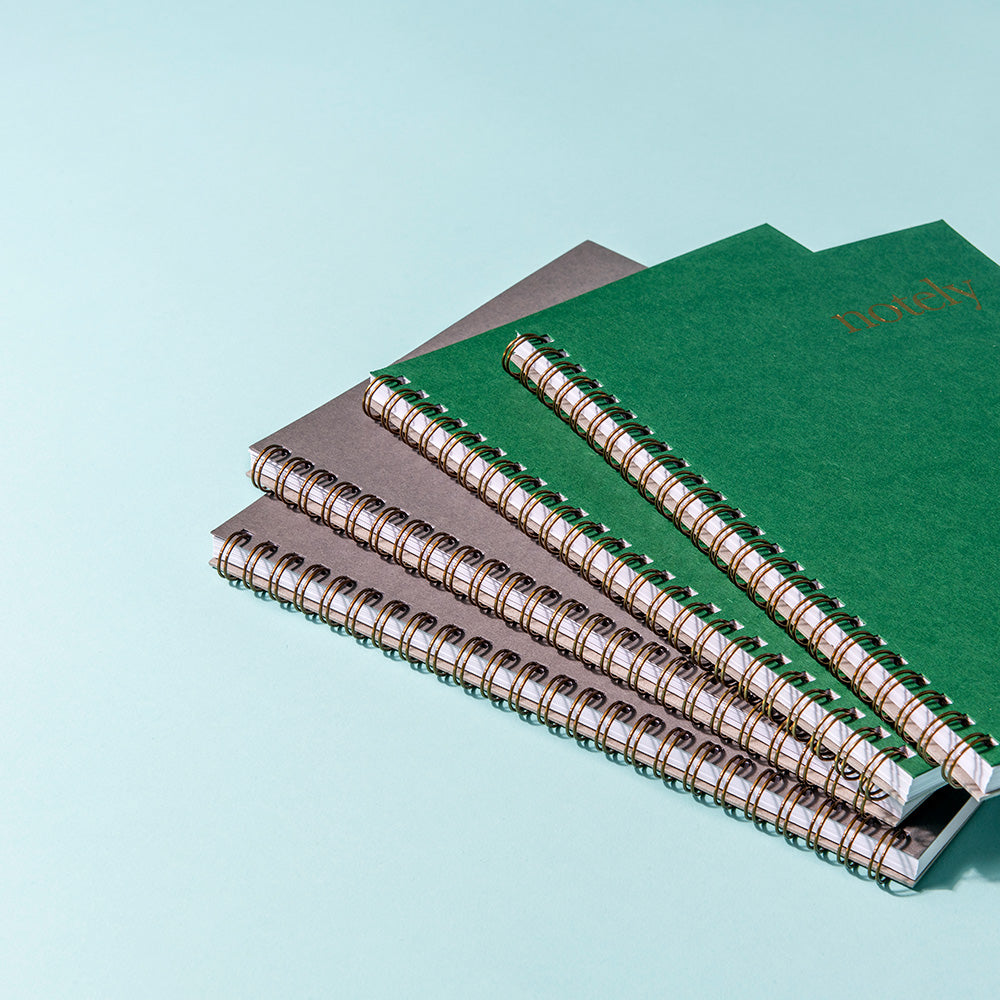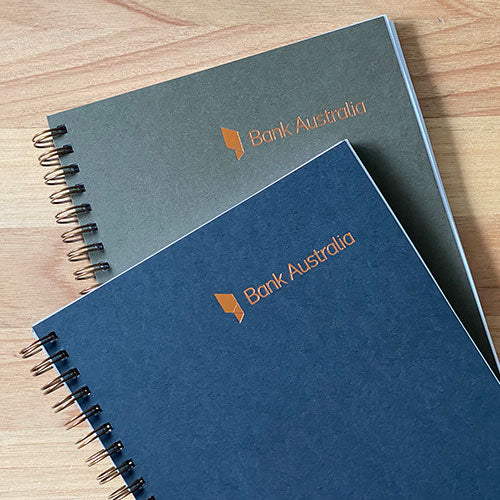Since the early part of the 21st century, there’s been a strong push towards the creation of paperless offices, where all documents and communication are digitised with little to no physical paper being used.
While there are benefits to going paperless, there is also a fair amount of hype and “greenwashing” surrounding the topic. Assertions such as ‘go paperless – go green’ and ‘go paperless, save trees’ often fail to take into account several “inconvenient” truths about the true environmental costs of digitisation, and blatantly ignore the inherent sustainability of paper.
In this article, we’ll be busting some of the myths and misconceptions that have sprung up around going paperless and take a look at a few of the environmental and personal benefits of using paper in the digital age.
Myth #1: Going paperless saves trees
Contrary to popular belief, going paperless does NOT save trees. Paper is produced by an environmentally-conscious industry whose entire future depends on planting more trees than it consumes.
Less paper does not mean fewer trees
While it seems logical to assume that going paperless means fewer trees will be harvested, this is not supported by data.
The Department of Agriculture’s 2019 forestry report shows clearly that using less paper does not reduce tree harvesting. In the 10 years from from 2007–2008 to 2017–2018, Australia’s paper and paperboard consumption decreased by 18.6%. Yet, the volume of logs harvested increased by 16.1%.
Responsible paper use promotes forest growth
Research shows that the global regions with the biggest industrial timber harvests and forest product outputs are also the regions with the lowest rates of deforestation.
Australian native and planted forests play a vital role in the global carbon cycle, fresh water supplies, biodiversity conservation and the preservation of environmental and social values.
Myth #2 Going paperless eliminates waste
Another common misconception is the idea that going paperless eliminates or reduces waste. In fact, our increasing reliance of digital devices has led to a new kind of waste. Generated by the large scale disposal of digital devices such as laptops, mobile phones,
printers, monitors, televisions, and computers, this electronic and electrical waste (e-waste) is one of the fastest growing waste streams on the planet. Imagine throwing away more than 800 laptops every second, and you’ll get an indication of the scale of the global e-waste issue.
Approximately 57.4 million tonnes of e-waste was generated globally in 2021. That’s more than the combined weight of all the commercial airliners ever made.
According to a 2019 report from the Platform for Accelerating the Circular Economy (PACE) and the UN E-Waste Coalition, the total figure is expected to reach 74 million tonnes by 2030 and as much as 120 million tonnes by 2050.
Australia generated 531,000 tonnes of e-waste in 2020–21 – up 2.6% on the previous year. And although roughly 54% of our e-waste is sent for recycling, current processes can only recover about 35% of the material inputs.
Despite public perception that we recycle around 50% of e-waste, only 17.4% of e-waste products are effectively recycled. And the recovery rate for plastic products in 2020–2021 was just 13%, with an estimated 87% of plastic waste ending up in landfills.
In comparison to plastic and e-waste, paper waste has a much smaller impact on the environment.
Australia is a leader in paper recycling. In 2020–2021, 62% of all paper products consumed in Australia were recovered. And, more than half of Australia’s recovered paper is used domestically for the production of paper and paperboard products.
Recycled paper saves water and energy, reduces pollution and landfill
Recycled paper production uses 50% less energy and 90% less water per tonne than virgin paper and requires just 25% of the amount of bleach used in new office paper.
Plus, every tonne of recycled paper, also saves approximately 31,780 litres of water, 4 cubic metres of landfill and 27 kilograms of air pollutants.
Approximately 2.3 million tonnes of paper and cardboard is recycled in Australia per year – in "everyday" terms the energy saved could power over 10 million households for a month.
Responsible paper use reduces greenhouse gas emissions
For every 100 reams of recycled office paper that is printed double sided, the estimated savings include more than one tonne of greenhouse gases and almost a cubic metre of landfill space.
Paper use reduces waste in native forests
Most of Australia’s wood (87%) is harvested from plantation forests, and this figure continues to grow, reducing the paper industry’s impact on native forests even further.
Although some of the residue and waste wood harvested from native forests is supplied to paper producers, if this didn’t happen, this wood would be left on site as waste or exported (increasing the carbon footprint of the process).
Myth #3 Going paperless saves resources
Contrary to popular belief, going paperless does not necessarily save resources.
Responsible paper usage supports the forestry industry and promotes the regeneration of forests, which are major economic assets – providing essential timber and wood products, and employment to thousands of people in the forestry and tourism industries.
Additionally, the extensive use of locally recycled fibre to produce paper and paperboard products, dramatically reduces the costs and carbon footprint of transporting fibre and paper products internationally.
By contrast the use of electronic devices results in the loss of precious metals. Massive amounts of gold, silver, copper, platinum and palladium trapped within disused devices are lost to landfill, storage units/containers, homes and offices each year.
According to a UN report, there is 100 times more gold in one tonne of smartphones than in a tonne of gold ore. And, forecasts show that globally e-waste is worth around $62.5 billion annually – more than the GDP of most countries and three times the output of the world’s silver mines.
Myth #4 Paper use causes soil erosion, air and water pollution
Paper, like all Australian forest products, originates from sustainably managed and legally harvested forests. Almost all (87%) of our wood is harvested from plantation forests that are routinely replanted and regenerated to sustain the paper and wood industry.
Both native and plantation forests play an essential role in the global carbon cycle, fresh water supplies, biodiversity conservation and the preservation of environmental and social values.
By supporting responsible forestry, you’ll be:
- Preserving and promoting the regeneration of forest land, rather than allowing it to be given over to infrastructure or agriculture (the single biggest direct cause of tropical deforestation)
- Improving air quality
- Prevents soil erosion
- Improves water quality – fighting salinity
- Provides habitats for native birds and wildlife
- Reduces the use of fertilisers and chemicals.
Myth #5 Going paperless limits carbon emissions
Email footers that encourage us to ‘think before you print this email’ imply that electronic records and communication have less effect on the environment than paper-based communications. These messages often ignore the unique sustainability of paper and assume that electronic communication comes without a carbon footprint. Unfortunately, this is not the case.
According to the 8billiontrees’ article, Email Carbon Footprint vs. Paper Letter by Mail (And the True Price of SPAM), although we understand that it takes energy to send a paper letter, we often ignore the energy required to send an email. And, in fact, while a standard letter-sized envelope generates between 20–25 g of emissions, an email with attachment generates between 20–50 g of emissions.
Where do these emissions come from? The carbon footprint of a letter or email is the amount of greenhouse gas equivalent (CO2e) produced directly or indirectly when sending the message. For emails, these emissions mainly come from the device used to send the email, with smaller emissions from the device’s electricity use, and the networks and data centres used to send and store emails.
Although the individual contribution of our emails to global emissions may seem small, when you factor in the 4.3 billion email users around the world, it adds up quickly.
According to the 8billiontrees article, 2022 studies indicate that the average worker sends 9,000–15,000 emails per year. And the carbon footprint of sending 10,000 emails equates to about 250 kg of carbon emissions – the equivalent of nearly 1,000 km of driving in an average car.
Research by McAfee, estimated that 78% of all incoming emails were spam and the approximately 62 trillion spam messages sent every year consumed 33bn kilowatt hours (KWh) of electricity, generating around 20 million tonnes of CO2e. This is the equivalent of the greenhouse gas emissions produced by driving more than 4 million cars for a year.
Faced with these numbers, it’s clear to see that instead of being a benign and friendly gesture, sending emails and e-cards does have an impact on our environment.
You can use paper and still be kind to the planet
At Notely, we believe you should be able to take notes, journal and organise your life without impacting the world’s forests.
That’s why we’ve made sure that our notebooks, journals, wall planners, writing pads and greeting cards offer the best surfaces for doodling, sketching, planning, dreaming and jotting down your most important thoughts – without compromising the environment.
The recycled pages in our notebooks and journals are made from 100% post consumer waste and contain no virgin paper fibres.
All our products are made from 100% FSC-certified recycled paper and printed with non-toxic plant-based ink using FSC-certified printing methods. Plus, our paper is carbon neutral and created using a completely chlorine-free process.
For more info on sustainable stationery, check out our article How to journal like a wild thing – and still be kind to the planet.
Replant the planet – one note at a time
We’ve made it our mission to replant the planet. Through our partnerships with One Tree Planted and Reforest Now, one tree is planted for every order we receive. Plus, every third order funds the protection of 2 sqm of native rainforest through Rainforest Rescue.
So far, we’ve contributed to restoring 400 sqm of Queensland rainforest, and with your help, we can achieve our goal of replanting 100,000 trees by 2025!
We don’t claim to be perfect on the sustainability front, but we are always working to do better and provide like-minded lovers of paper across Australia with the tools they need to express themselves, while still being kind to the earth.
Read more about our commitment to sustainability.
We’re working hard to keep waste out of landfills…
The covers of our Cup Notes series of notebooks are made using a mix of paper from recycled coffee cups. Since 90% of the waste from each coffee cup is converted into FSC-certified recycled paper fibre, no virgin tree fibres are used and each book keeps one coffee cup out of landfill.
We keep the Notely experience entirely plastic free by using recycled paper bands and tags and 100% compostable postage bags. Plus, we minimise packaging wherever we can to ensure our products create as little waste as possible.
And, we use only local suppliers to reduce our carbon footprint
Every Notely product is designed, printed and bound right here in Australia – eliminating unnecessary carbon emissions and supporting our local print industry.
Got questions about our products and/or how to recycle them?
Simply reach out to our friendly team. We’re happy to help.

![Spearmint A6 Pocket Notebooks [BULK 8 PACK] - Notely Lined](http://notely.com.au/cdn/shop/products/spearmint-a6-pocket-notebooks-bulk-8-pack-notely-399099_1600x.jpg?v=1699275130)








